| 1 |
X-Ray Diffraction-meter (XRD):
Make/Model: PANalytical
Specifications:
X’Pert Powder
Applications:
It is used for Characterization of structure at the nano-scale, phase identification and quantification of powders and thin films, measurement of thickness and quality of thin film structures & give information regarding crystallinity, crystalline size and orientation.
|
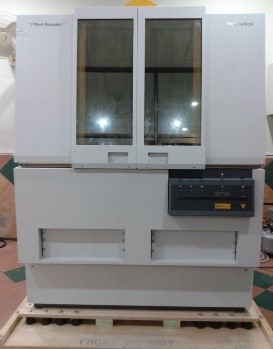 |
Dr. Abdul Razzaq
Email: abdulrazzaq@cuilahore.edu.pk
Engr. Tahir Saif
Email: tahirsaif@cuilahore.edu.pk
|
Spectroscopy Lab/
New Chemical Engineering Block
|
COSHH Form
|
| 2 |
High performance liquid chromatography (HPLC)
Make/Model: Agilent Technologies/1260 Infinity II
Specifications:
Diode array detector (DAD)
C-8 column
Applications:
It is used to separate a sample into its individual parts. This separation occurs based on the chemical or physical interactions of the sample with the mobile and stationary phases. Because there are many stationary/mobile phase combinations that can be employed when separating a mixture, there are several different types of chromatography that are classified based on the physical states of those phases. Liquid-solid column chromatography, the most popular chromatography technique, features a liquid mobile phase which slowly filters down through the solid stationary phase, bringing the separated components with it.
|
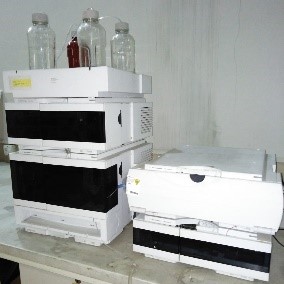 |
Dr. Abdul Razzaq
Email: abdulrazzaq@cuilahore.edu.pk
Engr. Tahir Saif
Email: tahirsaif@cuilahore.edu.pk
|
Spectroscopy Lab/
New Chemical Engineering Block
|
COSHH Form
|
| 3 |
Fourier Transform Infrared Spectroscopy (FTIR)
Make/Model:
Perkin Elmer / Spectrum II
Specifications:
Attenuated Total Reflectance (ATR) mode with Zn-Se Crystal
Range: 550-4000 cm-1
Applications:
ATR is a contact sampling method that involves a crystal with a high refractive index and excellent IR transmitting properties. ATR is one of the more popular sampling techniques used by FT-IR Spectroscopists because it is quick, non-destructive and requires no sample preparation. It is a contact sampling method that involves an IRE (Internal Reflection Element) with a high refractive index and excellent IR transmitting properties. The technique is used to measure the IR spectra of surfaces or of material that is too thick or strongly absorbing to be analyzed by more traditional transmission methods.
|
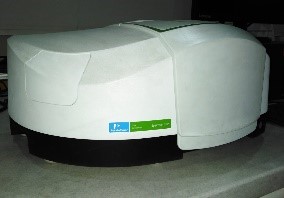 |
Dr. Abdul Razzaq
Email: abdulrazzaq@cuilahore.edu.pk
Engr. Tahir Saif
Email: tahirsaif@cuilahore.edu.pk
|
Spectroscopy Lab/
New Chemical Engineering Block
|
COSHH Form
|
| 4 |
UV Visible Spectroscopy:
Make/Model:
Biotechnology Medical Services (BMS)/ UV 1602
Specifications:
Liquid base spectroscopy wavelength range: 200-1100 nm
Applications:
UV-Vis Spectroscopy (or Spectrophotometry) is a quantitative technique used to measure how much a chemical substance absorbs light. This is done by measuring the intensity of light that passes through a sample with respect to the intensity of light through a reference sample or blank. This technique can be used for multiple sample types including liquids, solids, thin-films and glass.
|
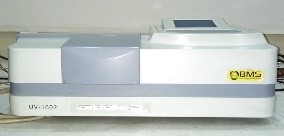 |
Dr. Abdul Razzaq
Email: abdulrazzaq@cuilahore.edu.pk
Engr. Tahir Saif
Email: tahirsaif@cuilahore.edu.pk
|
Spectroscopy Lab/
New Chemical Engineering Block
|
COSHH Form
|
| 5 |
Atomic Absorption Spectroscopy (AAS): Make/Model: Agilent technologies 200 series AA/ 280 FS AA
Specifications: The Agilent 280FS AA is a fast and productive flame AA system, featuring Fast Sequential operation combined with 8-lamp capability, premium optics, and Ultra lamp looms for greater performance
Applications: AAS is a spectroanalytical procedure for the quantitative determination of chemical elements using the absorption of optical radiation (light) by free atoms in the gaseous state. Atomic absorption spectroscopy is based on absorption of light by free metallic ions. In analytical chemistry the technique is used for determining the concentration of a particular element (the analyte) in a sample to be analyzed. AAS can be used to determine over 70 different elements in solution, or directly in solid samples via electrothermal vaporization, and is used in pharmacology, biophysics, archaeology and toxicology research. |
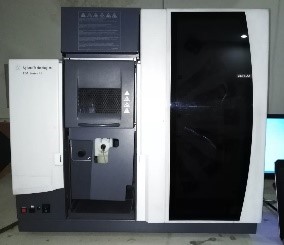 |
Dr. Abdul Razzaq
Email: abdulrazzaq@cuilahore.edu.pk
Engr. Tahir Saif
Email: tahirsaif@cuilahore.edu.pk
|
Spectroscopy Lab/
New Chemical Engineering Block
|
COSHH Form
|
| 6 |
Gas Chromatography (GC) equipped with
Make/Model: Agilent Technologies/ 7890 GC systems
Specifications:
Equipped with
MS: Mass spectrometer
ECD: Electron Capture Detector
TCD: Thermal Conductivity Detector
Applications:
Gas chromatography (GC) is an analytical technique used to separate the chemical components of a sample mixture and then detect them to determine their presence or absence and/or how much is present. These chemical components are usually organic molecules or gases. The separated components are then detected using various detector such as MS, TCD and ECD.
|
 |
Dr. Abdul Razzaq
Email: abdulrazzaq@cuilahore.edu.pk
Engr. Tahir Saif
Email: tahirsaif@cuilahore.edu.pk
|
Spectroscopy Lab/
New Chemical Engineering Block
|
COSHH Form
|
| 7 |
Nuclear Magnetic Resonance (NMR) Spectroscopy
Make/Model: Magritek
Spinsolve Carbon
Specifications:
1H frequency: 43 MHz
Applications:
NMR is a spectroscopic technique to observe local magnetic fields around atomic nuclei. The sample is placed in a magnetic field and the NMR signal is produced by excitation of the nuclei sample with radio waves into nuclear magnetic resonance, which is detected with sensitive radio receivers. The intramolecular magnetic field around an atom in a molecule changes the resonance frequency, thus giving access to details of the electronic structure of a molecule and its individual functional groups. As the fields are unique or highly characteristic to individual compounds, in modern organic chemistry practice, NMR spectroscopy is the definitive method to identify monomolecular organic compounds.
|
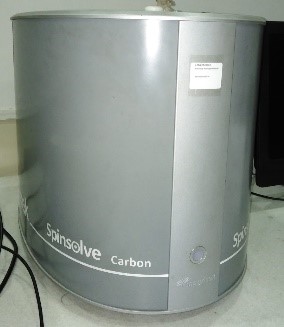 |
Dr. Abdul Razzaq
Email: abdulrazzaq@cuilahore.edu.pk
Engr. Tahir Saif
Email: tahirsaif@cuilahore.edu.pk
|
Spectroscopy Lab/
New Chemical Engineering Block
|
COSHH Form
|
| 8 |
Internal Mixer:
Make/Model: Thermofisher, Germany (HAAKE Rheomix 600 OS)
Specifications:
Rotor Type: Roller Rotors
Torque: 160 Nm
Temp. : Up to 4000C
Bowl Capacity: 120 ml
Applications:
Mixing, kneading, compounding and plasticizing of different polymer and rubber compounds.
|
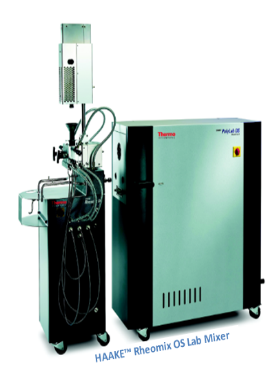 |
Dr. Zulfiqar Ali
Email:
Zulfiqar.ali@cuilahore.edu.pk
|
Polymer Processing Lab /
Old Chemical Engineering Block
|
COSHH Form
|
| 9 |
Rubber Process Analyzer /Moving Die Rheometer:
Make/Model: Montech, Germany (MDR 3000)
Specifications:
Test Chamber: biconical
Die gap: 0.45mm
Oscillation f = 0 -100 Hz
Oscillation Amplitude = 0-1800
Torque Range: 0.0001 – 235 dNm
Applications:
MDR 3000 rheometer measures the plasticity of vulcanization, the cure rate, time for curing at certain temperature and pressure. Also, it examine the behavior of the rubber mixture at post-vulcanization stages.
|
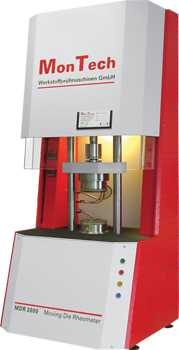 |
Dr. Zulfiqar Ali
Email:
Zulfiqar.ali@cuilahore.edu.pk
|
Rubber Technology Lab /
Old Chemical Engineering Block
|
COSHH Form
|
| 10 |
Hydraulic Hot Press:
Make/Model: Carver, USA (AutoFour/3012-PL,H)
Specifications:
Max clamp Froce: 30 ton
Heated Platens: Yes
Platen Size : 12 × 12
Applications:
Curing and vulcanization of polymeric and rubber materials/compounds at highly controlled Temperature/Pressure conditions.
|
 |
Dr. Zulfiqar Ali
Email:
Zulfiqar.ali@cuilahore.edu.pk
|
Polymer Processing Lab /
Old Chemical Engineering Block
|
COSHH Form
|
| 11 |
IV Analyzer:
Make/Model: Keysight B2901A Precision Source / Measure Unit (SMU)
Specifications:
Minimum Source resolution: 1 pA/1 µV
Minimum measurement resolution: 100 fA/100 nV
Maximum output: 210V, 3 A DC/10.5 A pulse
Applications:
Testing semiconductors, discrete and passive components (Diodes, laser diodes, LEDs, Photodetectors, sensors, Field effect transistors (FETs), bipolar junction transistors (BJTs), ICs Resistor, varistor, thermistors, switches etc.)
|
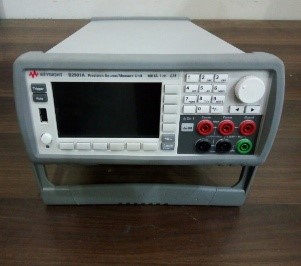 |
Dr. Maria Mustafa
Email:
Mariamustafe@cuilahore.edu.pk
|
Nano-Synthesis & Green Energy Research Lab (K2)/
K Block
|
COSHH Form
|